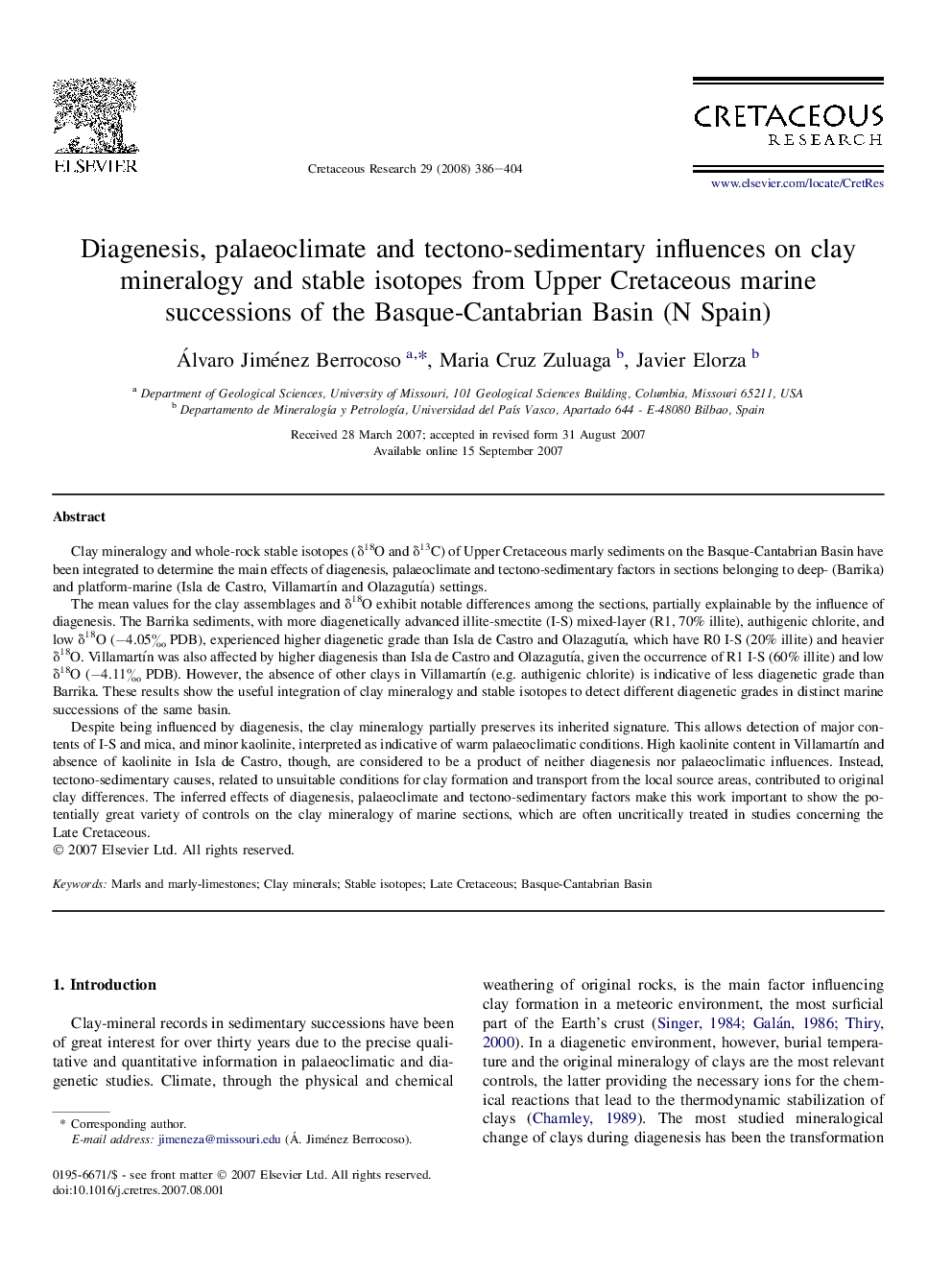| Article ID | Journal | Published Year | Pages | File Type |
|---|---|---|---|---|
| 4747675 | Cretaceous Research | 2008 | 19 Pages |
Clay mineralogy and whole-rock stable isotopes (δ18O and δ13C) of Upper Cretaceous marly sediments on the Basque-Cantabrian Basin have been integrated to determine the main effects of diagenesis, palaeoclimate and tectono-sedimentary factors in sections belonging to deep- (Barrika) and platform-marine (Isla de Castro, Villamartín and Olazagutía) settings.The mean values for the clay assemblages and δ18O exhibit notable differences among the sections, partially explainable by the influence of diagenesis. The Barrika sediments, with more diagenetically advanced illite-smectite (I-S) mixed-layer (R1, 70% illite), authigenic chlorite, and low δ18O (−4.05‰ PDB), experienced higher diagenetic grade than Isla de Castro and Olazagutía, which have R0 I-S (20% illite) and heavier δ18O. Villamartín was also affected by higher diagenesis than Isla de Castro and Olazagutía, given the occurrence of R1 I-S (60% illite) and low δ18O (−4.11‰ PDB). However, the absence of other clays in Villamartín (e.g. authigenic chlorite) is indicative of less diagenetic grade than Barrika. These results show the useful integration of clay mineralogy and stable isotopes to detect different diagenetic grades in distinct marine successions of the same basin.Despite being influenced by diagenesis, the clay mineralogy partially preserves its inherited signature. This allows detection of major contents of I-S and mica, and minor kaolinite, interpreted as indicative of warm palaeoclimatic conditions. High kaolinite content in Villamartín and absence of kaolinite in Isla de Castro, though, are considered to be a product of neither diagenesis nor palaeoclimatic influences. Instead, tectono-sedimentary causes, related to unsuitable conditions for clay formation and transport from the local source areas, contributed to original clay differences. The inferred effects of diagenesis, palaeoclimate and tectono-sedimentary factors make this work important to show the potentially great variety of controls on the clay mineralogy of marine sections, which are often uncritically treated in studies concerning the Late Cretaceous.
